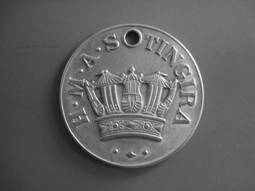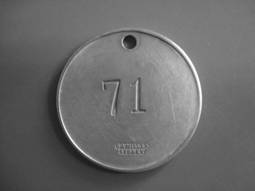- Author
- Swinden, Greg
- Subjects
- History - general
- Tags
-
- RAN Ships
- HMAS Tingira
- Publication
- March 2011 edition of the Naval Historical Review (all rights reserved)
The navies of the world are governed by rules and regulations and the RAN is no exception. Among the thousands of items of administration which have guided and directed the Royal Australian Navy for the last hundred years or so is the little known issue of the HMAS Tingira Tram Pass.
Tingira was the Boys Training Ship, commissioned into the RAN on 25 April 1912, and moored in Rose Bay, Sydney. Between April 1912 and June 1927, when the ship was decommissioned, over 3,000 boys (ranging in age from 14½ up to 16 years) were enlisted as ‘Boy 2nd Class’ and undertook their basic training in the ship for several months before being sent to the Fleet.
The pay of a Boy 2nd Class was quite low and in 1922 they were paid a wage of ten shillings a week, of which three shillings was deferred pay and not available until he had been finally discharged from the service. The boys only actually received one shilling per fortnight, with the bulk of their pay being credited to their Commonwealth Bank account pass book, handed to each boy on his final posting from the ship. Thus when the boys proceeded on leave each Saturday they had the grand amount of sixpence available for each weekend’s leave. As part of an agreement between the RAN and the NSW Government Tramways it was agreed that Tingira boys were only required to pay a flat rate of one penny for tram fares, due to their low rates of pay and limited access to their pay.
From 1900 until 1914 the tram fares were one penny per section, up to a maximum journey available of six sections. In 1917 the adult fare was one and a half pence per

image courtesy of Sydney Tramways Museum
section, which rose in 1920 to twopence for one section, threepence for two sections, fourpence for three sections, fivepence for four sections and sixpence for the fifth and sixth sections. The trip from Lyne Park (the naval shore facility at Rose Bay) to the city was three sections, hence the agreement between the Navy and NSW Tramways so the boys were not spending all their available pay on tram fares. As the boys went on leave in uniform and were easily distinguishable by their HMAS Tingira cap tally, this was originally seen as proof enough that they were Tingira boys.
Sailors, however, being sailors, soon found a way to exploit this system and for some time many ex-Tingira sailors would keep a spare Tingira tally in their pocket when going on leave, and substitute it for their normal cap tally when using the trams. In about 1922 (but perhaps earlier) the navy came up with a cunning plan to stop this fraud, and thus the HMAS Tingira Tram Pass was created.
The pass was a cupro-nickel disc (slightly larger than a 20 cent piece and somewhat thinner) with a naval crown and the words HMAS Tingira on one side and an individual
One 1926 Tingira boy recalls being called to the gangway by the ship’s chaplain, and directed to proceed to his house nearby to collect a book he had left behind. The boy was given two pennies and a tram pass to make the journey. The boy decided to spend the first penny on the tram fare to the chaplain’s house and then run back and thus keep the second penny. He did this but the chaplain spotted him running along the foreshore of Rose Bay, and he was severely berated upon his return the ship.






